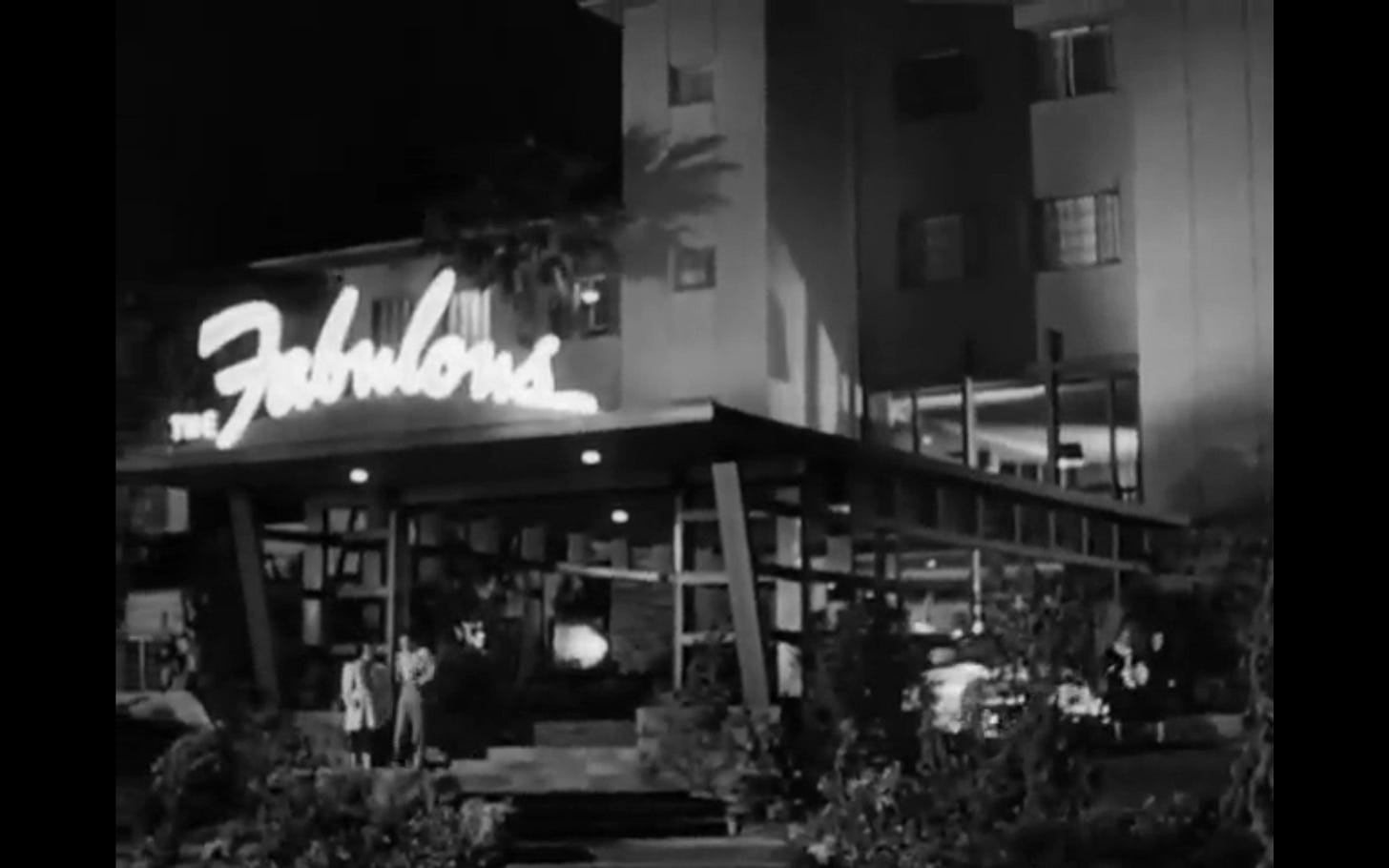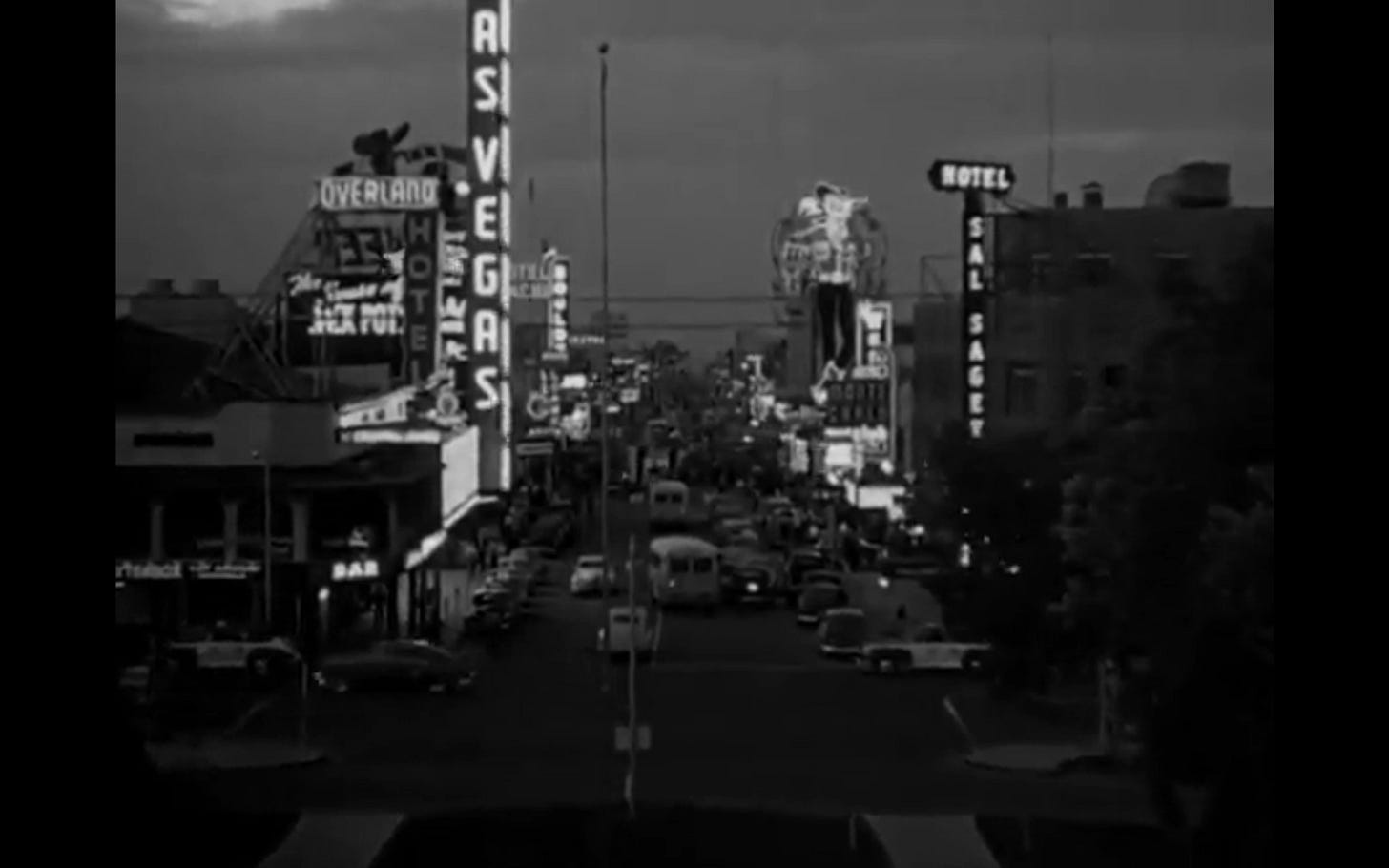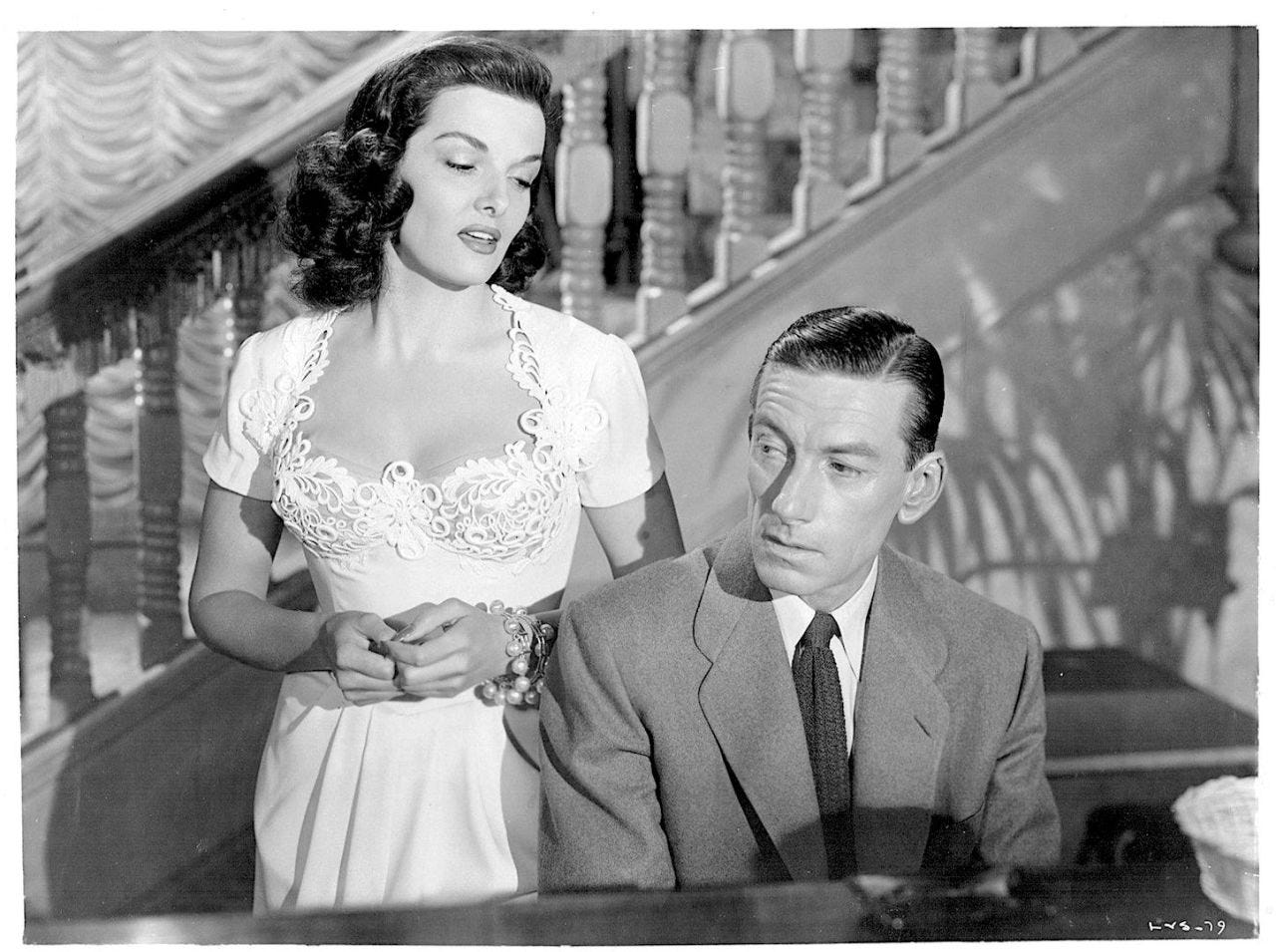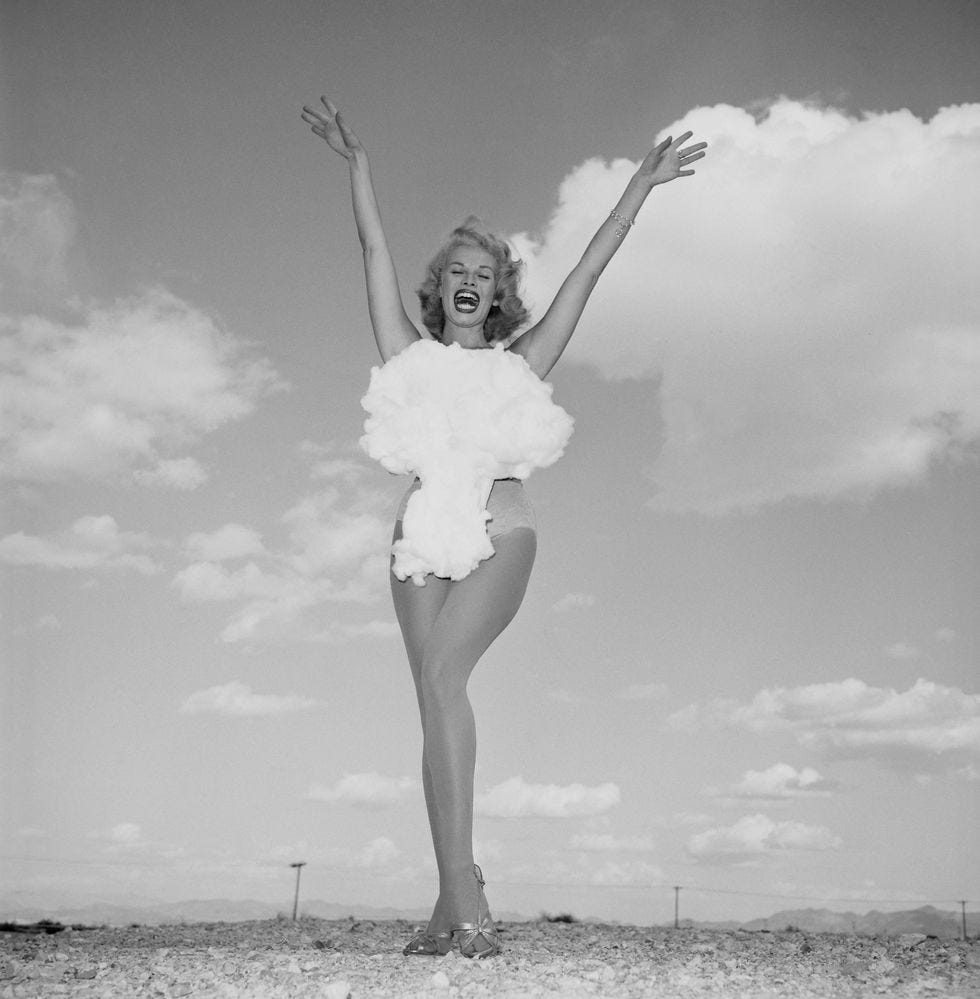The Las Vegas Story: The Not-Quite-Next Casablanca
This is a revised and updated version of a previous post from 2023
We’ll always have VEGAS . . .
Released in 1952 and directed by Robert Stevenson (Jane Eyre, The Strange Woman, My Forbidden Past), The Las Vegas Story is perhaps best remembered today not for its plot, but for the battle it sparked between the Screen Writers Guild and Howard Hughes. Hughes refused to credit screenwriter Paul Jarrico because of his alleged communist ties. A staunch anti-communist, Hughes spent the 1950s scrubbing the RKO talent pool and film credits of anyone suspected of leaning even slightly to the left.
Hughes wasn’t alone. The early 1950s marked the peak of the Hollywood blacklist, a period when careers were destroyed based on real or suspected communist ties. Studios feared public backlash, Congressional investigations, and even federal prosecution, so many preemptively censored their own projects and personnel. The battle over Jarrico’s credit became part of this larger, ugly fight for artistic survival in an era of paranoia.
Howard Hughes’s obsession with filmmaking was as intense as it was destructive. He had entered the film industry in the late 1920s, famously producing Hell's Angels (1930), an aviation epic that pushed technical boundaries but also revealed his perfectionist, control-freak tendencies. Hughes's hands-on interference in film production became a hallmark of his career. In 1948, he purchased a controlling interest in RKO Pictures, one of Hollywood’s major studios, making him the first sole owner of a major studio since the industry's inception.
Hughes' tenure at RKO was chaotic. He personally reviewed scripts, re-cut films, adjusted production schedules, and maintained politically motivated blacklists. His erratic leadership caused production bottlenecks, alienated top talent, and eventually led to a mass exodus of creative professionals. During his reign, RKO's film output dwindled, its financial losses mounted, and its reputation crumbled. By the mid-1950s, Hughes had effectively run the studio into the ground. He sold RKO in 1955, and within a few years, the studio ceased operations entirely.
Hughes' reign over RKO also coincided with the slow collapse of the classic Hollywood studio system. In 1948, the landmark Supreme Court decision United States v. Paramount Pictures, Inc. forced studios to divest from their theater chains, breaking the vertical monopolies that had long controlled the film industry. This ruling, combined with the rise of television and Hughes' disastrous management, accelerated RKO's decline and contributed to the unraveling of the studio era as a whole.
The film is a fascinating artifact of Hughes’ desire to make his own Casablanca, a dream fueled—and haunted—by the long shadow of Hollywood’s brightest years.
The plot centers on Linda Rollins (Jane Russell) and Dave Andrews (Victor Mature), former lovers who cross paths again in Sin City. We never learn exactly what drove them apart, but both have moved on—more or less. Linda’s new husband, Lloyd (Vincent Price), doesn’t quite measure up to Dave and has gotten himself tangled in some shady business. Things soon spiral to the point where Dave—now a lieutenant with the Las Vegas Sheriff’s Department—is forced to get involved, pulling him right back into Linda’s orbit.
The plot? Wild. Convoluted. The characters? Paper-thin. But here’s what makes this movie worth your time: the setting.
Shot on location by cinematographer Harry J. Wild (Pitfall, The Big Steal, Gentlemen Prefer Blondes), The Las Vegas Story captures a Vegas that feels like another planet compared to the theme park it is today. This is still a dusty, half-wild western town where the strip isn’t yet paved in gold.
By 1952, Las Vegas was exploding as a post-war playground. The city’s population had doubled between 1940 and 1950, and mob-financed casinos lured high rollers, Hollywood stars, and curious middle-class tourists. The GI Bill gave returning veterans greater economic mobility, and weekend trips to Vegas quickly became a fashionable escape. Organized crime fueled the city’s rapid transformation. Figures like Bugsy Siegel, who built the Flamingo Hotel into a Vegas landmark, helped turn the desert into a high-rolling haven. Hughes would later leave his mark on Las Vegas, buying up hotels and casinos, legitimizing the city’s reputation, and shifting it from mob-backed risk to corporate-backed glamour.
Originally, The Las Vegas Story wasn’t even set in Las Vegas. Hughes first imagined the story unfolding in Miami, with the working title The Miami Story. It was planned as RKO’s bid to recapture the magic of Casablanca, with Robert Ryan lined up to star as the brooding lead in a tale of love, intrigue, and sacrifice. Hughes wasn’t alone in his admiration for Casablanca—in the years after its success, Hollywood spent a decade chasing its formula: doomed romance, exotic settings, and morally complicated heroes. But Hughes had his own preferences. He liked Las Vegas more than Miami. So he moved the production west and swapped out Ryan for Jane Russell and Victor Mature.
Like all Hughes films, he micromanaged the entire project—costumes, props, even securing a pivotal Cartier necklace. Hughes' fixation with Jane Russell shaped much of his RKO output. He had famously launched her career with The Outlaw (1943), a film that battled censors for years due to its overt sensuality and was marketed almost entirely around Russell's bust. She became Hughes' cinematic muse, often cast as the center of attention in his projects, and her presence in The Las Vegas Story was no accident. Hughes was still trying to mold her into an enduring star and a symbol of the kind of sex appeal the studio system was increasingly struggling to contain.
Hughes was hell-bent on making a sweeping romance that would also double as a glamorous travel ad for Las Vegas. He even threw in Hoagy Carmichael as a piano player named Happy, who just happens to know the lead characters’ special song and plays it… again… and again…
Despite Hughes’ grand ambitions, the movie falls flat. No amount of money could save it. The plot is a mess, the characters are hollow, and the whole thing leans hard into the silly.
But if you’re curious about the history of Las Vegas, the film is a visual gem. Much of it was shot on location at the Flamingo—Bugsy Siegel’s famous hotel and casino. The production briefly changed the sign to read The Fabulous, but it’s unmistakably the Flamingo. The film also roams through the 1950s Las Vegas Strip, the Hoover Dam, and the Mojave Airport, capturing a city that was still dusty, raw, and half-built.
And in its own way, The Las Vegas Story accidentally captured a cultural moment. It hit theaters just months after the first atomic bomb was detonated on U.S. soil, igniting the national atomic craze. Between 1951 and 1962, the U.S. conducted nearly 100 nuclear tests at the Nevada Test Site, just 65 miles northwest of Las Vegas. The detonations were visible to hotel guests and establishments began advertising ‘atomic bomb viewing parties’ from their rooftops. Tourists sipped cocktails while watching mushroom clouds bloom on the horizon—a surreal collision of Cold War anxiety and Vegas showbiz spectacle. Las Vegas eagerly embraced it. The mushroom cloud quickly became the city’s unofficial logo, plastered on postcards, candy, toys, and even showgirls' headdresses. And whether it meant to or not, the film rode that wave.
The atomic craze of the 1950s didn’t just shape tourism—it permeated American popular culture, aesthetics, advertising, and even music. The "atomic age" was marketed as both thrilling and modern, influencing fashion with space-age silhouettes, diners with Googie architecture, and pop songs with titles like "Atom Bomb Baby" and "Uranium Rock." Yet beneath the kitschy surface, there was a growing undercurrent of fear. Films like Them! (1954) and Godzilla (1954) tapped into the darker side of the nuclear age, portraying radioactive monsters and mass destruction as a reflection of atomic anxiety. Civil defense drills and the constant threat of mutually assured destruction loomed large in the American psyche, creating a strange cultural split where nuclear war was both a distant party backdrop and an imminent existential threat.
In the end, The Las Vegas Story didn’t live up to its atomic hype. It bombed at the box office, losing RKO $600,000.
Our frenemy Bosley Crowther at The New York Times summed it up nicely:
"The Las Vegas Story is one of those jukebox gambling films that gives the impression of being made up as it goes along..."But I especially love this zinger from the Harvard Crimson (March 1952):
"Howard Hughes' latest effort, The Las Vegas Story, has the same old Hughesian ingredients: Jane Russell's bust, Vincent Price's portrayal of a rich degenerate, a luxurious locale (The Fabulous Hotel in Las Vegas), and a spectacular chase sequence near the finish. Only this time Victor Mature (not Robert Mitchum) plays the hero, and Hoagy Carmichael has been thrown in for kicks, along with an incredible diamond necklace rented from Cartier, Inc. The result, as usual, is a preposterously silly picture."
Even if the film is a misfire, it’s still a fascinating snapshot of a vanished Vegas. If nothing else, The Las Vegas Story lets us glimpse the city before it became the 'what happens here stays here' casino playground we know today.
Keep reading with a 7-day free trial
Subscribe to The Screen Spectator to keep reading this post and get 7 days of free access to the full post archives.










